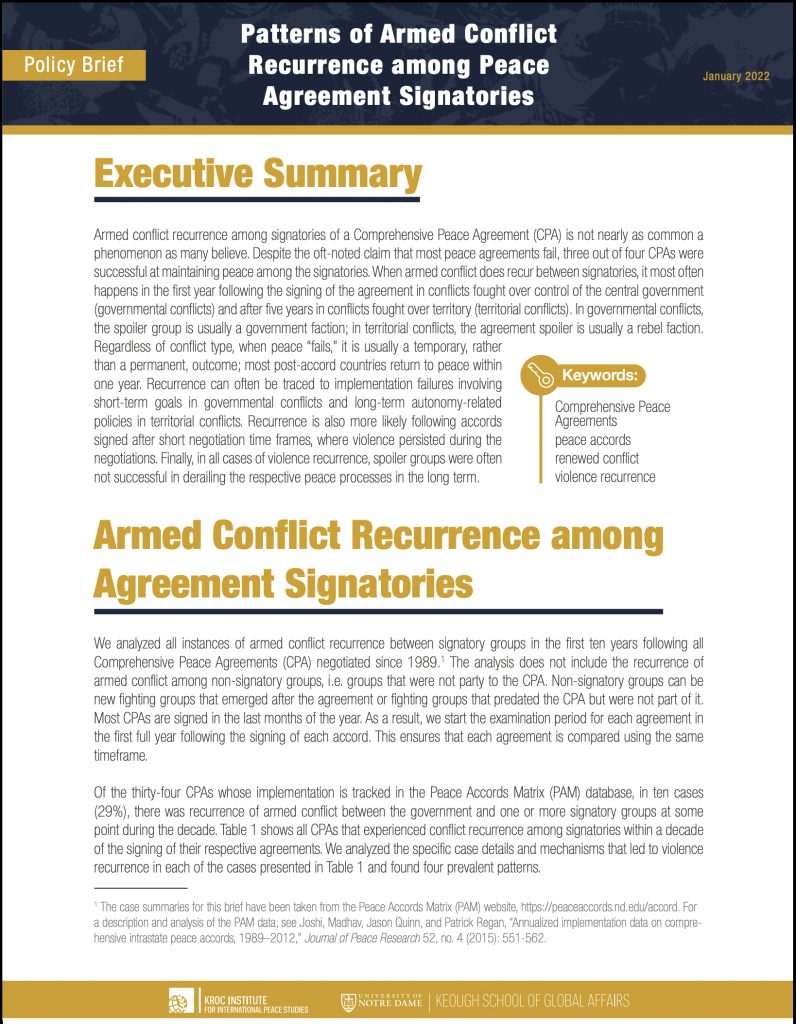Patterns of Armed Conflict Recurrence among Peace Agreement Signatories
Authors: Jason Quinn, Sally Sharif
Publication info: Kroc Institute for International Peace Studies, Keough School of Global Affairs, January 2022
Full text: Read this brief at curate.nd.edu
Abstract
Armed conflict recurrence among signatories of a Comprehensive Peace Agreement (CPA) is not nearly as common a phenomenon as many believe. Despite the oft-noted claim that most peace agreements fail, three out of four CPAs were successful at maintaining peace among the signatories. When armed conflict does recur between signatories, it most often happens in the first year following the signing of the agreement in conflicts fought over control of the central government (governmental conflicts) and after five years in conflicts fought over territory (territorial conflicts). In governmental conflicts, the spoiler group is usually a government faction; in territorial conflicts, the agreement spoiler is usually a rebel faction. Regardless of conflict type, when peace “fails,” it is usually a temporary, rather than a permanent, outcome; most post-accord countries return to peace within one year. Recurrence can often be traced to implementation failures involving short-term goals in governmental conflicts and long-term autonomy-related policies in territorial conflicts. Recurrence is also more likely following accords signed after short negotiation time frames, where violence persisted during the negotiations. Finally, in all cases of violence recurrence, spoiler groups were not often successful in derailing the respective peace processes in the long term.
Recommended citation
Quinn, Jason, and Sally Sharif. Patterns of Armed Conflict Recurrence among Peace Agreement Signatories. Peace Accords Matrix Policy Brief Series. South Bend, IN: Kroc Institute for International Peace Studies, Keough School of Global Affairs, University of Notre Dame, 2022. https://doi.org/10.7274/n870zp42b4w
